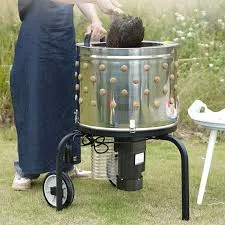pig pen fence
Dec . 06, 2024 17:51 Back to list
pig pen fence
The Pig Pen Fence A Practical Guide to Building and Maintaining a Secure Enclosure
When it comes to raising pigs, one of the most critical aspects of animal husbandry is creating a safe and secure environment for the animals. A pig pen fence is not just a physical barrier; it represents the safety, well-being, and productivity of your livestock. In this article, we will explore the essential considerations for building and maintaining a pig pen fence that will keep your pigs safe and your property intact.
Understanding the Needs of Pigs
Pigs are intelligent and curious animals. They have a natural inclination to explore their surroundings, which often leads them to test the limits of their enclosure. Understanding their behavior is vital when designing a pig pen. Pigs can become easily bored, which can cause destructive behaviors if they are confined in a small and uninspiring environment. Thus, a well-constructed pig pen fence should not only be secure but also allow for some level of mental stimulation and physical space for the pigs to roam.
Choosing the Right Materials
The choice of materials for your pig pen fence is crucial. Here are some common materials to consider
1. Wood Wooden fences can be visually appealing and provide a robust structure. However, they may require regular maintenance and can be susceptible to rot.
2. Chain Link This option provides good visibility and ventilation for the pigs. It's durable and low-maintenance but may not be effective alone, as pigs are known to root and can find ways to dig underneath if not properly secured.
3. Electric Fencing Electric fencing is an increasingly popular choice among pig farmers. It can be quite effective in keeping pigs contained, as they quickly learn to respect the boundaries. However, it must be properly installed and maintained to ensure its effectiveness.
4. Barbed Wire While barbed wire can be effective in keeping pigs contained, it may not be the best choice for the pigs' welfare, as it can cause injuries. Using barbed wire should be approached with caution.
Ultimately, the best fencing material often combines various elements to ensure both durability and safety
.Designing the Pen Layout
pig pen fence

The layout of the pig pen is just as important as the materials used. It's advisable to allow for an ample amount of space—at least 50 square feet per pig. This amount of space helps accommodate their natural behaviors, such as rooting and wallowing. Creating different zones within the pen can also enhance their quality of life. Consider incorporating areas for feeding, resting, and even wallowing in mud, which is essential for their skin health.
Installation Factors
Once you've selected the appropriate materials and designed the layout, it's time for installation. Here are some steps to keep in mind
1. Plan the Perimeter Clear the area of any debris, rocks, and vegetation to ensure that the fence is installed flush with the ground and prevents any potential escape routes.
2. Depth for Posts When installing fence posts, ensure they are set deep enough into the ground to avoid tipping. A depth of at least one-third of the post height is often recommended.
3. Secure the Bottom Pigs are notorious for digging, so it’s essential to secure the bottom of your fence. A buried wire mesh or a board nailed horizontally at the base can help deter digging.
4. Gates Ensure that gates are robust and designed for easy access while maintaining security. Heavy-duty latches are vital to keep the pigs inside and predators out.
Maintenance
Maintaining your pig pen fence is an ongoing process. Regularly inspect the fence for signs of wear, damage, or breaches. Look for loose wires in electric fencing or rotting timber in wooden fences. Keep the area around the fence free from debris that might help pigs escape or encourage predators to enter. Regular maintenance not only prolongs the life of your fence but also ensures the safety and health of your pigs.
Conclusion
Building and maintaining a pig pen fence is an essential responsibility for anyone raising pigs. By selecting appropriate materials, creating a thoughtful layout, and ensuring ongoing maintenance, you can provide a safe and fulfilling environment for your pigs. Not only will this lead to healthier, happier pigs, but it will also contribute positively to your pig farming experience. Remember, a well-constructed fence is the foundation of successful pig husbandry.
-
Automatic Feeding Line System-Pan Feeder Nipple Drinker|Anping County Yize Metal Products Co., Ltd.
NewsJul.29,2025
-
Hot Sale 24 & 18 Door Rabbit Cages - Premium Breeding Solutions
NewsJul.25,2025
-
Automatic Feeding Line System Pan Feeder Nipple Drinker - Anping County Yize Metal Products Co., Ltd.
NewsJul.21,2025
-
Automatic Feeding Line System Pan Feeder Nipple Drinker - Anping County Yize Metal Products Co., Ltd.
NewsJul.21,2025
-
Automatic Feeding Line System - Anping Yize | Precision & Nipple
NewsJul.21,2025
-
Automatic Feeding Line System - Anping Yize | Precision & Nipple
NewsJul.21,2025






